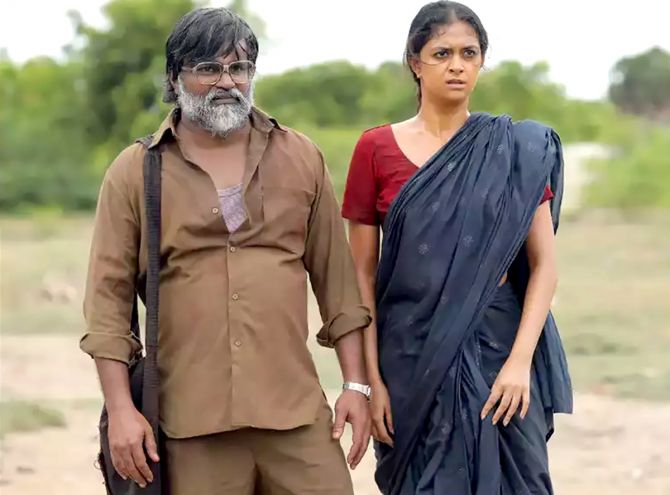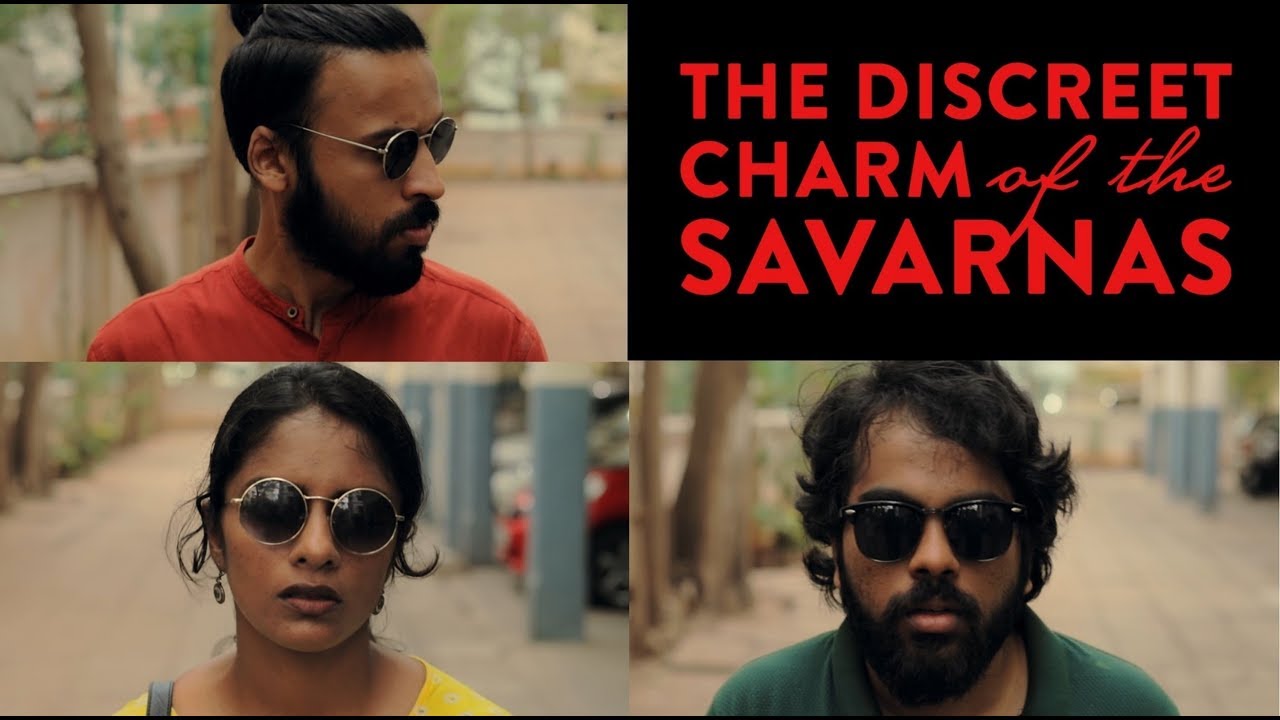Ambedkar Jayanti is a significant day in India that commemorates the birth anniversary of Dr. Bhimrao Ambedkar, an Indian jurist, economist, and social reformer who played a crucial role in drafting the Indian Constitution. As we celebrate this day, it is essential to reflect on Ambedkar’s contributions towards the eradication of the caste system in India. Indian cinema has been a powerful medium to depict the realities of Indian society, including the caste system, which has been prevalent for centuries. In this blog, we will explore how Indian cinema has portrayed the caste system through these movies and its impact on society, and how it has contributed to breaking the chains of this oppressive system.
1. Geeli Puchhi
Geeli Pucchi is a short film directed by Neeraj Ghaywan and is a part of a Netflix Anthology called Ajeeb Dastans. The cast includes Konkana Sen Sharma and Aditi Rao Hydari. The movie begins with Bharti Mondal (Konkana) who is a machine worker in a factory and Priya Sharma (Aditi) who can be seen as the manager of the same factory. Bharati is a Dalit woman who is given the job of a machine worker despite having skills and experience and Priya, an upper-caste woman gets the same job. The two are the only female staff in the factory and Bharati lies to Priya on the very first day about her caste, telling her name is Banerjee and not Mondal as Banerjee is a surname of Bengali Brahmin while Mondal is Dalit.

The two later get attracted to each other but Priya is unaware of her own sexuality. The casteism is evident through the dishes, and food since the first day of the shared tiffin together. As soon as Bharati tells her she is a Dalit, something in Priya changes since then. She leaves Bharati outside the cabin when colleagues celebrate her birthday and she is called just to distribute the cake later. Bharati being hurt and shattered watches everything. Later when she visits Priya after Priya gives birth to a child, she realizes that Priya has told the il laws about the caste. Hence, she is served tea in a different stainless-steel cup by Priya’s family. By this, Bharati feels more humiliated. The friendship soon ends and doesn’t end well as Bharati advises Priya’s in-laws for Priya to take a longer break and she takes over the job as Priya quits.
The short film throws light on the everyday injustice and ill-treatment a Dalit woman goes to, and also how same-sex relationships and sexualities are still so undiscovered and unknown by the people. Priya who once kissed Bharati later becomes insensitive and ignorant enough to get the tea served in a different cup to her. The bigotry and differences win over the cute and sweet bond between the two. The film also draws a similarity from real-life incidents where Dalits or any lower caste people are considered unhygienic for no reason and face discrimination based on the same. It’s not just about hygiene but also the feeling of superiority. Be it north, south, or any region people from scheduled castes are often not served food with the same utensils or are washed and kept separate right after their use. The reality is even more absurd. As shown in the documentary, there was no washroom for ladies in the factory despite Bharati working there. The washroom was only built when Priya, an upper caste woman, gets posted in the factory. Dalit women and Dalits, in general, have gone through a lot of injustice and discrimination throughout their life. The feeling of being looked down upon just because you were born in a certain caste is as pathetic as it gets. The film has called out the people who still follow the stigma by showing little details.
2. Saani Kaayidham
Saani Kaayidham is a Tamil movie focusing on violence against women and Casteism. The movie has a very violent and graphic scene but it is entirely based on revenge of a woman. Ponny, who is a lady constable returns from her work but gets raped by four men on the way. Why did the men do so? Because Ponny’s husband gets in a fight with the four men in the Godown he used to work in as he is forced to clean the toilet which is used by the people of the Godown. Later, he discusses with an old man in the Go-down to form a political party for the lower caste people of the village. The men abuse him for his dream and later the fight escalates. The four men having as fragile egos as they could have, rape Ponny while she was returning from her job, thrash her badly, and on the other hand, set her house on fire while Ponny’s husband and their daughter were asleep in the house. Ponny later tries to fight for justice in the court but the lawyer helps the powerful men by saving them. Disheartened and frustrated by this, Ponny starts to take revenge on her own with the help of her brother and kills all of them in the most brutal way possible. They go through a lot of difficulties during this but still manage to get revenge.

The film doesn’t only show the power abused by upper caste and privileged men in the village and society but also how the men easily target women even if there has barely been any involvement of the woman. Ponny was targeted and raped in the same way because a few upper-caste men couldn’t justify the fact that a lower-caste man retaliated against them. This too is valid in today’s reality even now. For instance, if any two men get in a fight in this country, they’ll not just create a ruckus but abuse their mothers and sisters. People have hit fixed in their tongues that they will abuse the female members of the family if there is any kind of argument with each other. Saani Kayidham digs deeper into the societal inequalities and this time they don’t end things by only victimizing the lower caste woman but they also feature her hunting every rapist and killing them as brutally as she could. Although the convenience of her being able to kill the men gets a little unrealistic, the main motive is to show how bad, scary, and haunting the results of Caste differences can be.
3. Asuran
Asuran is a Tamil movie made in 2019 starring actor Dhanush. The movie focuses on the caste differences and the injustice and cruelty specially the lower caste farmers go through. It is a commentary on caste and violence shown as a revenge saga. The movie begins with Sivasmay escaping to somewhere with his younger son in order to save the life of the whole family. What leads to this? A pair of slippers. Sivasmy who is assumed to be a coward by his younger son Chidambaram is insulted and punished by the rich Zamindar family’s head because his elder son Murugan gets into a fight with one of the workers of the upper caste community over land. This triggers Murugan and he hits the man with slippers who insulted his father. Unable to digest the fact that a lower caste boy slapped him, he orders people to kill Velmurugan and they do it brutally. The younger son Chidambaram is absolutely irritated by his father not taking revenge and just grieving. It’s obvious that one caste is highly dominant on the people of another caste. Chidambaram in order to avenge the death of his elder brother also goes to fight with the upper caste community of the village, as a result, the people start hunting him to take his life and hence causing the family to escape. Later, when things go too far the ‘Asuran’ of Sivasamy is unleashed to take revenge. He further tells his son that it had happened before when the girl he loved at a young age was killed and burnt along with the whole village. And it all happened because she dared to walk in the village wearing a pair of slippers gifted by him. He being the Asuran hunts the actual Asurs of the family who burnt the people and their houses to feed their ego.

The movie shows a very complex and detailed state of the farmers in general and specially the lower caste farmers of the village. Till today, the farmers in many rural areas are cheated and are deprived of their own rights because of the difference of Caste and Class being still in existence. Sivasmy had no other option but to take revenge as it becomes too much to hold and go through. The ‘Asuran’ (demon) is not actually Sivasmay but the very much existing Casteism and the people who still follow the evil practices. The Slippers controversy shown in the movie is still a very minor representation of the actual casteism in reality it had been much worse and still is. In Kerala the lower caste women were not allowed to cover their breasts and only the upper caste ladies were permitted to do so. How unfair is it that a person doesn’t have rights over their own body? Coming back to the theme of the movie, it also features how the ownership of the land has always been a pertinent issue for the farmers. It’s evident as Sivasmay tells Chidambaram that if they’ll have land the upper class will overtake it, if they have money they will snatch that too but if they have knowledge, that can never ever be taken away from them.
4. Masaan (2015)
‘If it disturbs you, It’s art’. The disturbingly beautiful movie revolves around the ghats of Varanasi, Uttar Pradesh and the people from different communities living in the city on the shore of Ganga. As the name suggests, the movie features the Shamshan of Manikarnika ghat which is known for doing funerals. Deepak, a member of the Dom community which deals with the funerals on ghats, falls in love with a girl of Baniya or the Gupta community, Shaalu. He is a hard-working man and he believes that he can try and marry his beloved after he bridges the barrier of caste with his degree and a Job. At first, he doesn’t tell Shaalu for a long time about his family but when she keeps insisting, to introduce her to his family, he gets angry and tells her, “Hum Dom hain, har raat ghat pe laashon ke haddi tod ke shraadh karte hain.” Later, when Deepak finds out Shaalu’s body in the pile of dead bodies at ghat, he gets immensely disturbed and heart broken. (I am a dom, I break the bones of the dead bodies and complete their funeral.) On the other hand, Devi, a girl from the brahmin community who is curious to discover about Sex life is busted and blackmailed by the police for doing so.
The guy she tries to have sex with, kills himself as soon as he knows that the police had come during their private moments. What’s more saddening is that just for the sake of respect in the community, the poor father of Devi who is a pandit at ghat, pays the police three lakhs. After some time, both Deepak and Devi meet at a river boat while they are trying to move on with their life. The movie ends there.

Masaan throws a light on the life of the Dom community in Varanasi especially those who are entitled to do the funeral work for ages. The Dom community is one of the most unnoticed communities and has struggled a lot through years. Showing the dynamics as how a Dom boy is not supposed to marry a Gupta girl and on the other hand The girl from the Brahmin community has to pay 3 lakhs for saving their family’s pride just because she wanted to discover about her body and sexuality. The most heart-breaking part is when Deepak finds the body of his beloved and for the first time, he experiences the pain of the death of someone personally while he had become accustomed to dead bodies and their last rites. The Dom community is said to be performing the last rituals for hundred years and more in Kashi (Varanasi) and has a very minimal status in the society. Masaan presents their point of view, painfully yet beautifully.
5. The Discreet Charm Of The Savarnas (2020)
The Discreet Charm of The Savarnas reveals not only the ignorance of Savarna (upper caste) filmmakers, but is also telling of their preconceptions about caste (Shinde, 2020). The plot is straightforward: three savarna filmmakers, Aruna (Kani Kusruti), Dilip (Rajagopalan Ganesan), and Swami (Mathivanan Rajendran), have lost their male lead and are looking for someone to replace him (Thomas, 2021). “We need someone who looks a little more Dalit,” says Dilip, emphasising the importance of finding someone who appears Dalit rather than someone who actually is Dalit (Thomas, 2021). The film is lighthearted yet biting satire on the Indian film industry and its inability to interact with caste issues (Shinde, 2020). These filmmakers are seeking a specific “type”—a victim whom their art can liberate. Unintentionally, in the creation of the film, they are perpetuating a rendition of the caste divide: people like “us” get to create art about people like “them”. Near the end of the film, they are shown snuggled up in a cab stuck in traffic, blabbering about the “fringe groups” outside the cab obstructing their quest of the perfect Dalit, unaware that what they are passing through is the Ambedkar Jayanti festivities at Chaitya Bhoomi. When the trio meets a Dalit who is confident, well-educated, and attractive, it breaks a figurative ivory tower — they had presumed that elegance and articulation were the exclusive domain of people like themselves. They are unable to have a proper discussion on caste by considering themselves outside the system, and as a result, their art casts their kind (the upper caste) as the liberators of the oppressed.

The film takes its title from Luis Buuel’s 1972 French film, The Discreet Charm of the Bourgeoisie. This film employs a similar style of telling a story within a story to stitch together potent perspectives on caste. The film is unlike the recent anti-caste movies. It mentions caste but isn’t specifically about “Dalits”, the focus here has mischievously shifted to the Savarnas. It discusses caste but does not discuss trauma, messiah or any evident resistance. Films depicting the lifestyle and tribulations of Dalit people are frequently made by Savarna filmmakers, who possess very less understanding of their plight. So, what motivates them? It earns them the label “liberal” in the film industry. Caste is mostly saddening, harsh, or painful in Indian cinema, and it is always about the oppressed caste, as if upper caste filmmakers have no caste of their own and have to reach out to the lowest in the caste hierarchy to talk about caste (Shinde, 2020). It is common to hear about how caste is fading in India’s urban cities and this film digs into that lie with a lot of snark and charm.
6. Share Auto (2019)
During the 2019 Lok Sabha elections, Director Pa Ranjith and his organisation, Neelam Cultural Centre, released this two-minute seven-second short film as part of their #VoteOutHate awareness campaign. Written and directed by Jeny Dolly, the film is about discriminatory treatment in an urban setting, where a person’s caste is ascertained by their profession, the garments they wear, and the colour of their skin.
The film begins with a fair-skinned, upper-caste woman, played by Jaya Swaminathan, getting into a share auto. Her brow furrows as she looks at the other commuters. She maintains a noticeable distance from the woman beside her, a dark-skinned woman played by Sheeba Rampal in a blue saree, and uniform sanitation. Despite the fact that the lady in the blue saree adjusts and gives her space, the upper-caste woman maintains her distance and unfriendly expression. Notwithstanding the suggestion of the auto driver, the upper caste woman does not sit properly and ends up bumping her head when the vehicle jerks (Rajendran, 2019). Her fellow commuter, who had been watching the upper caste woman’s shenanigans to prevent bodily contact with her, grins and puts on her earphones. Eventually, amidst her great attempts, she leans into her seat and her shoulder brushes up against the sanitary worker. Nobody in the auto observes what’s going on, but the two women do. The sanitary worker doesn’t say anything. With her final smile, she pops in her earphones and the song ‘Bongu’ from Kadhalum Kadanthu Pogum starts playing, expressing that the circumstance will take care of itself. The upper caste woman is seen rubbing her head in pain as the screen fades to show the message that ‘Discrimination is injurious to health’.
References
Gupta, S. (2015, July 24). Masaan review: There is a tussle between what has always been, and what can be. The Indian Express. Retrieved February 26, 2023, from https://indianexpress.com/article/entertainment/movie-review/masaan-movie-review/
Kumar, P. (2019, October 4). ‘Asuran’ review: A bloody, gory and glorious revenge saga. The Hindu. Retrieved February 26, 2023, from https://www.thehindu.com/entertainment/movies/asuran-review-a-bloody-gory-and-glorious-revenge-saga/article61978156.ece
By Khyati Singh Parmar
Content Writing Intern, Tripsero

